Baby sugar gliders are insanely cute. Sugar gliders are amazing creatures, and their babies are every bit as amazing. In my opinion, they’re among the cutest baby creatures out there. However, there’s more to these amazing marsupials than just being cute. They’re quite remarkable animals and there are some interesting tidbits that you might not know about them.
In this post, I’m going to go over the top 5 facts about sugar glider babies that’ll blow your mind. Enjoy!
Baby sugar gliders are called “joeys”
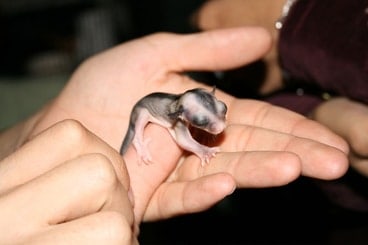
If you’re familiar with kangaroos, you probably know that a baby kangaroo is called a “joey” but did you know that sugar glider babies are also referred to as joeys? In fact, the babies of all marsupials (meaning animals that carry their young in their pouch) such as koalas, possums, and wombats are called joeys.
The reason why the name “joey” was chosen for the babies of marsupials is unfortunately unknown. Some speculate that it comes from aboriginal Australian origin while others believe it to be because the females copulate with more than one male at the time, meaning that nobody knows who the father is… it could be any old “joe”!
A Sugar glider baby is the size of a grain of rice
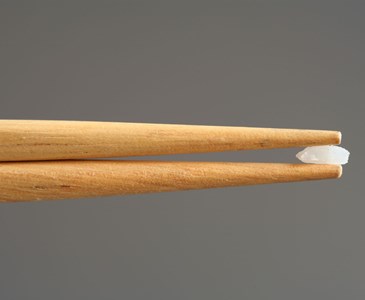
Baby sugar gliders are incredibly tiny. They’re the size of a grain of rice and weigh no more than 0.2 grams. They spend the first 60 days of their life completely contained in their mother’s pouch where they feed on their mother’s milk.
Sugar glider babies come to this world completely blind and without fur but with a working sense of smell. They can not see anything in their mother’s pouch but can find her 4 nipples through their sense of smell.
After 80 days they will open their eyes and will start spending short amounts of time outside of her pouch. After 110 days they leave the nest completely.
They grow from baby to adult in under a year
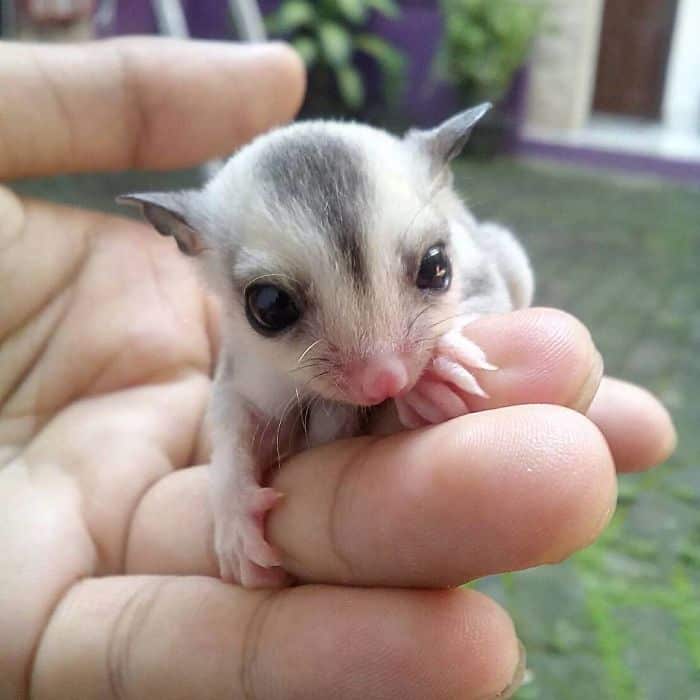
While sugar gliders are born very tiny, they grow up quite fast. It takes them less than a year to reach adulthood and males reach adulthood even faster than females. A male sugar glider can go from the size of a grain of rice to fully grown in only 4 months! Talk about some strong mother’s milk!
Click here to learn more about how big sugar gliders get.
Sugar glider babies are usually born as twins
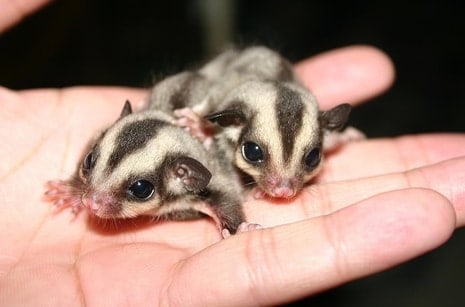
While it’s rare for humans to give birth to more than 1 baby at a time, in sugar gliders, this is the most common outcome. 81 percent of the time 2 sugar glider joeys will be born while 19 percent of the time only 1 baby will be born.
It is unclear why the majority of babies are born as twins rather than singles. However, it is known why they do not give birth to more than 2 joeys at a time.
Most creatures similar to sugar gliders give birth to more young at a time. Sugar gliders don’t do this so they retain their ability to glide. If they had to carry more young in their pouch they would become too heavy to properly use their gliding ability.
They are cared for by both parents
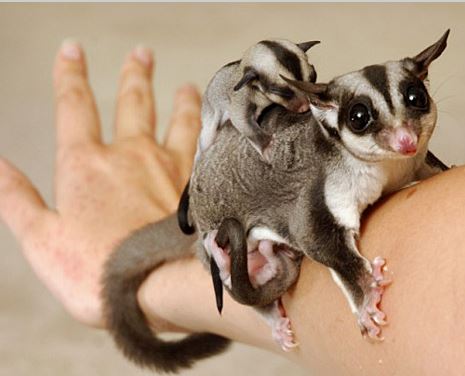
Sugar gliders are one of the few mammals that practice male parental care. With most mammals, the children are raised solely by their mothers, but sugar glider babies are cared for by both parents.
The primary reason for this is that the babies can’t thermoregulate their bodies until they are 100 days old. One of the parents will take up the responsibility of foraging for food while the other will huddle up close to the babies to make sure they don’t die from hypothermia.
That’s the official reason why male sugar gliders do not leave their babies, but I believe they do it because their babies are just too darn cute to abandon!
Conclusion
I hope you found this list of top 5 sugar glider baby facts entertaining and that you learned something new. If you’ve got any other interesting knowledge you’d like to share about these amazing creatures, feel free to leave a comment down below!
- How Long Do American Eskimo Dogs Live? Important Factors and Care Tips - September 29, 2023
- Do American Bulldogs Need Grooming? Essential Tips and Care Guidelines - September 29, 2023
- Do Bengal Cats Enjoy Playing? Essential Tips for Keeping Them Active - September 29, 2023